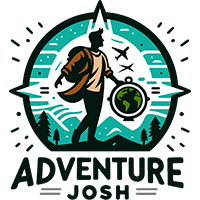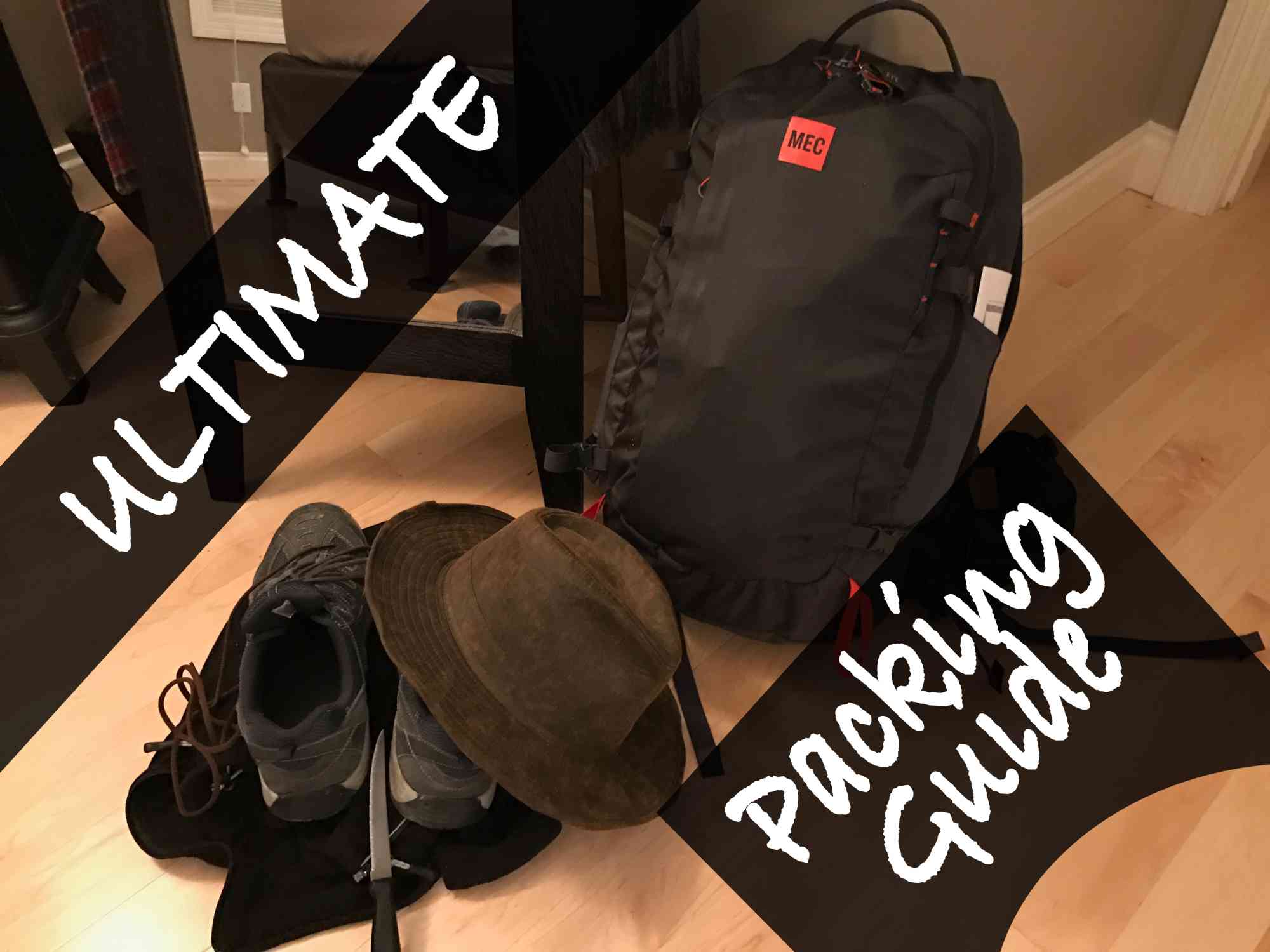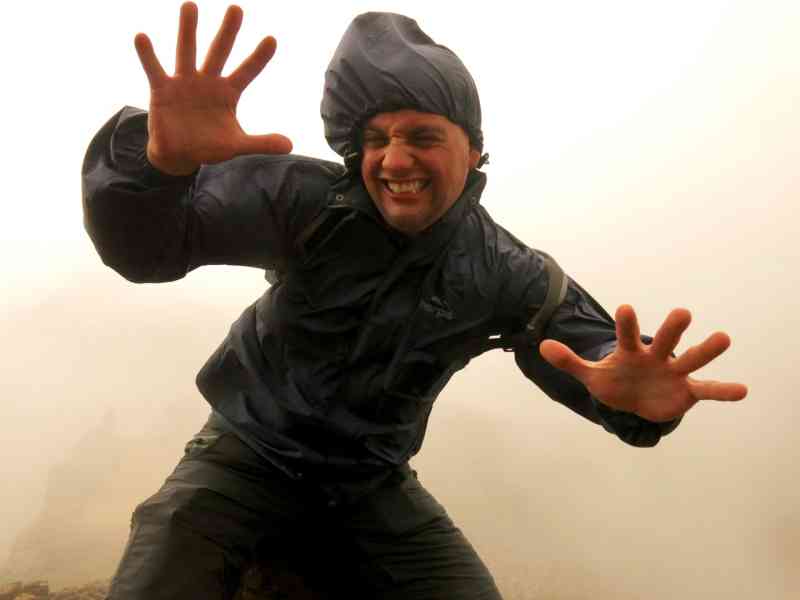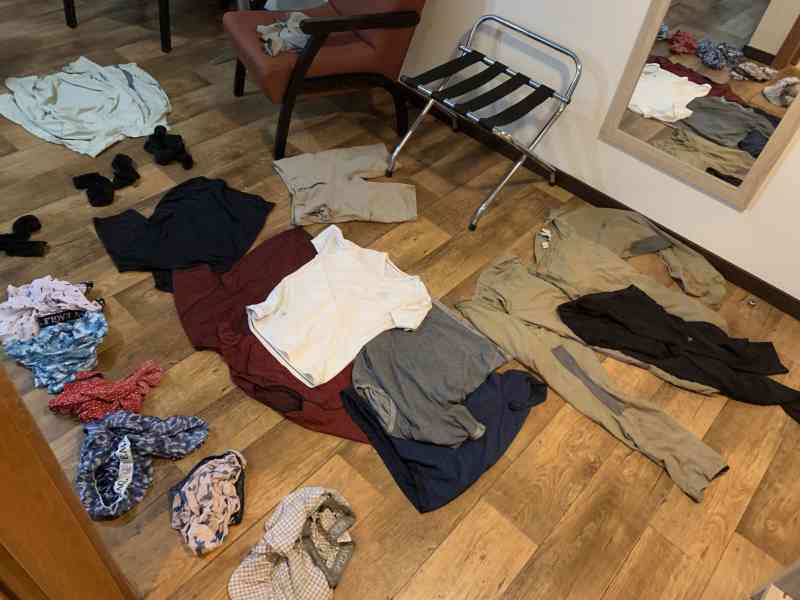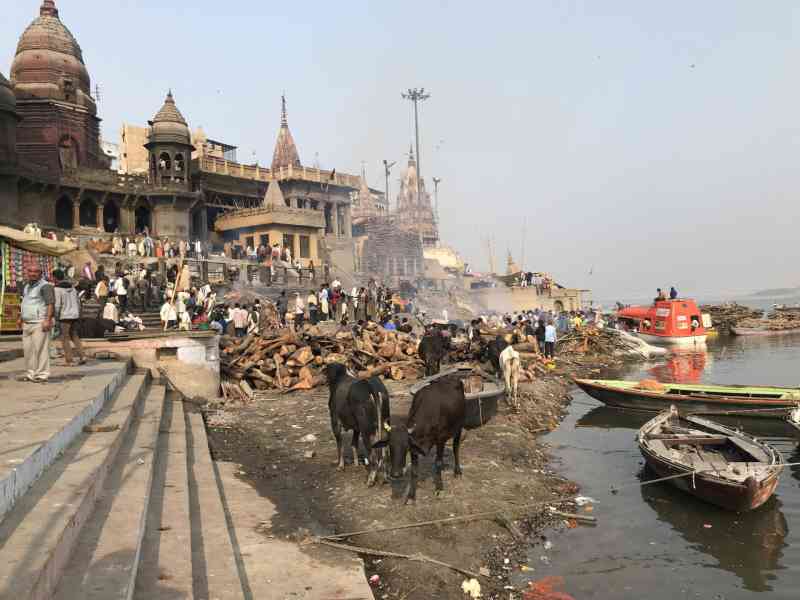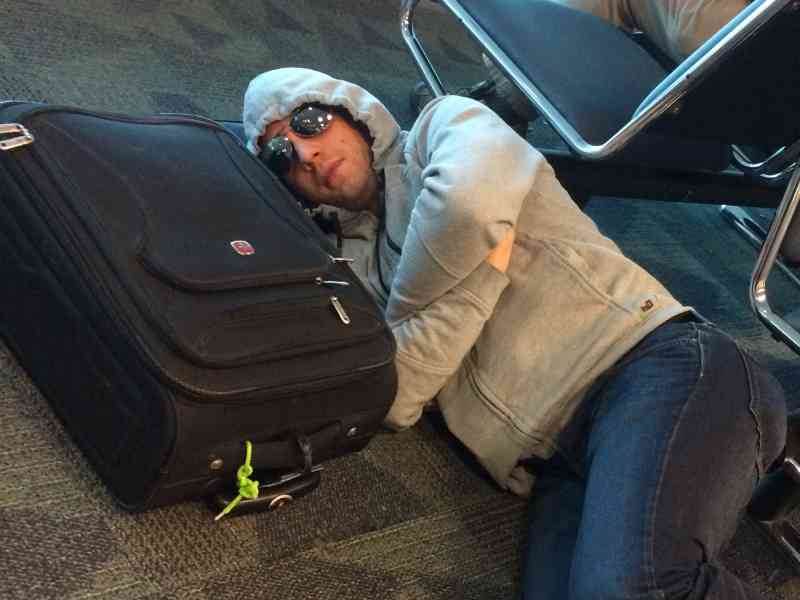Ultimate Packing Guide
It’s easy to overpack when travelling. As a general rule, I only pack five days of clothing and supplies. Then, plan to shop and do laundry along the way.
An artist once said that the piece is not complete when there’s nothing left to add, but when there is nothing left to take away. This should be your philosophy towards packing.
Pack lightly but effectively. Always ask yourself if you truly need the item you are about to bring. The hotel will have hair dryers, so do you necessarily need to bring the one that you love? Do you really need that old school point and shoot, or does your phone have a pretty wicked camera?
- Passport, Entry Visa, Vaccination Papers & Extra Passport Photos
- Your Travel Bag/Suitcase/Backpack
- Clothing and Toiletries
- Shoes, Shoe Bag, Socks, Laces
- Simple Snacks
- Laundry
- Water Bladder
- Pen and Paper
- Chlorine Tabs
- Screw-Cap 100 mL Liquid Containers
- Toilet Paper
- International License
- Quick Dry Towel
- Sunglasses & Hat
- Ear Plugs & Eye Mask
- Money Belt & Decoy Wallet
- Mini First Aid Kit
- Emergency Poncho
- Duplicate Cards
- Cash
- Photo Copies of ID and Credit Cards
- Translation Cheat Sheet
- Emergency Information
- Cell Phone, Apps & Accessories
- Hostel Living
- Medications
Passport, Entry Visa, Vaccination Papers & Extra Passport Photos
A passport that expires no sooner than six months with at least two blank pages at the back. And, a paper copy of your entry visa and proof of vaccinations (if required).
Always get vaccinations and entry visa’s at least two months in advance. Some countries also require a physical stamped and signed passport photo separate from your ID to retain for their records.
A passport protector is also critically important as damaged passports from water, tearing, or bending can impede the ability to entry a country. Newer passports have a microchip in them that can be damaged. If it’s unscannable, your passport may be invalid.
On the rarest of occasions, I have been asked for a copy of my home country car insurance papers when renting a vehicle. This will likely only be in the event where you decline renter’s insurance. Your driver’s license should also not expire before the last day you will require a car rental. Renew early if necessary.
Your Travel Bag/Suitcase/Backpack
See my other post on choosing the perfect travel bag.
Clothing and Toiletries
The clothes that I do pack are usually lightweight activewear such as Lululemon. This leaves them loose and flexible enough for enjoying a tight airline seat, thin enough to pack multiples, and structurally suitable for quick-drying. Often activewear is designed to be very breathable and may even come with built-in UV protection. Bring a spare plastic bag for a wet bathing suit or dirty laundry.
I’ll also always bring a pair of long-johns and an undershirt to help layer in case things get too chilly. The clothes you bring should be suitable for layering in best-case and worst-case weather. And likewise, the clothes should also be culturally appropriate for local laws.
Shoes, Shoe Bag, Socks, Laces
In the event you need more than one pair of shoes, pack them in a plastic bag inside your suitcase. A shower cap makes an excellent makeshift solution. They may be clean now, but that will change quickly!
Extra shoelaces aren’t something most people think about, but can be a definite headache preventer. Ditto for extra clean and dry socks.
The shoes that you do bring should be runners or light hiking shoes that are well-worn. Never break in new shoes on a trip to avoid blisters from long days of walking. Gortex, a water resistant, but breathable fabric is one of the first things I look for when buying hikers.
Merino wool sock are water-wicking, which means they repel water and also are quick drying. Not to mention deodorizing! They are the perfect choice when doing laundry abroad or staying active.
Simple Snacks
Emergency pre-packaged snacks like energy bars for flights. Avoid any snacks that do not come pre-packaged like fruit or vegetables. These may cause a hold-up at customs due to pest control. Bringing protein powder? Keep it in its original container, our cut out a label, to prevent it from looking suspicious.
Laundry
Found at hiking outlets, pick up a waterproof bear bag/compression bag. This will serve as an excellent laundry bag to keep the smells in. Not only will it keep your dirty clothes from contaminating your clean ones, but it will also ensure they take up the least amount of space possible. Multiple compression bags for various clothing types can be a great way to not only organize, but space-save. Rolling clothes will also reduce their footprint and reduce wrinkles.
Grab a small bottle of Campsuds. This is an eco-friendly multipurpose soap that backpackers use while on hiking trails. It also doubles as excellent in-sink laundry detergent or shampoo!
Water Bladder
A hiking water bladder. Unlike a traditional water bottle, this will take up much less room and is flexible. It can also be emptied for space savings. My personal favourite is the Platypus.
Pen and Paper
From filling out customs forms to making important notes.
Chlorine Tabs
If travelling to a developing country where the water quality is hit or miss, these are the most efficient way to ensure that drinking water is safe.
Screw-Cap 100 mL Liquid Containers
Buy some travel containers at your local pharmacy or department store. Screw caps will ensure they don’t accidentally open inside your luggage. Can you imagine the nightmare you’d have on your hands if your shampoo leaked over everything? Higher quality container sets will often come with a sealed bag.
Airlines have a maximum of 100 mL per container, and 1L overall. These should all fit inside one 1L bag. Be sure to label each container with its contents in case of an inspection.
Toilet Paper
Not all restrooms were created equally. Stay safe. Stay clean. Some countries will also charge for access at the door, charge for toilet paper, or charge to flush. Bring coins. On a side note, learn how to squat for hole-in-the-ground toilets across Asia!
International License
In over 30 countries, and probably 20 of which I’ve personally driven in, I’ve never been asked for it whether it was required or not. Though, it can’t hurt. Maybe one day it will come in handy. They’re available from BCAA for around $25. There is no test to write. You will be given an informational booklet and a stamp. A quick Google search will yield the current countries where it is required.
Quick Dry Towel
For those long stopovers at airports, having a quick-dry towel will allow you to wash your face and/or hair to freshen up.
Sunglasses & Hat
You’re going to lose these countless times. Don’t bring an expensive pair, and be prepared to buy more as you travel! Bring a loose fitting hat with a brim that compresses well and can be used for keeping the sun off. In my personal collection, mine also includes a detachable mosquito mesh around the back.
Ear Plugs & Eye Mask
Whether you’re stuck on a red-eye flight with a crying child behind you, in a hostel with a snoring monster below you, or lost your luck on getting quiet hotel neighbours, a good set of earplugs are essential.
I’ve had a number of earplugs over the years, and have even tried those expensive titanium-cored ‘Snoozers.’ In the end, the best ones that worked for me were ones from the local grocery store that compress really well and reinflate very slowly. They conform to my ears perfectly. Another great, albeit more expensive, alternative are noise-cancelling headphones.
I swear I must have transparent eyelids. Even if I close my eyes, I’ll lay there wide awake if there is light around me. Having a comfortable soft fabric pharmacy-grade eye-mask has saved me countless hours of lost sleep. You never know when you’ll be craving a few hours shut-eye on a daylight flight, have a late night and the other hostellers are up early with the room lights on, or when you’ll have a hard time adjusting to the time change and the hotel blinds don’t quite cut it.
Money Belt & Decoy Wallet
I covered this one extensively in my other article about safety. Check it out!
It is absolutely important that this money belt has RFID protection and is preferably waterproof if you’ll be storing your passport in it.
Mini First Aid Kit
See my other article about building a great travel first aid kit!
Emergency Poncho
This lightweight and small plastic shield will save you in sudden and unexpected weather changes. Whether it’s to cover yourself or your bag. Do not bring an umbrella. It is a massive waste of space; buy one on the go if necessary.
Duplicate Cards
Bring both a debit and a credit card. Credit cards will often have much better international exchange rates than taking cash out of an ATM. They will allow you to rack up travel points quickly. Bring debit cards for withdrawing cash from ATMs, but they will likely not work in POS terminals. ATMs with the “Plus” logo on them will work with most international cards. A clever traveller will leave a secondary set of cards in the hotel in case their daypack is lost or stolen.
Cash
International currency orders can take up to ten business days to fill at a bank. Don’t rely on ATMs in your destination country. They also can offer horrendous exchange rates for cash withdrawals versus credit card transactions. Bring a minimum of US$100 for an emergency, and three days worth of food and hotel money in the local currency. Calling ahead to your bank to advise them of your travel plans is often no longer necessary, but certain transactions may still get flagged and your card temporarily blocked until you are able to call in and verify.
Photo Copies of ID and Credit Cards
If for any reason you’ve lost your ID, having a photocopy of at least your passport will be critical! Store a digital copy of this on the cloud as well. DropBox is an excellent app for this.
Translation Cheat Sheet
See my other article for information on important words and phrases.
Emergency Information
A laminated copy of your name, address, phone number as well of those of local emergency contacts like a hospital and police. Include your allergies and dietary restrictions on it in the local language as well.
Cell Phone, Apps & Accessories
See my other articles for the best apps and travel hacks for phones.
Hostel Living
Packing for hostels is quite a bit different than packing for a luxurious hotel. While towels can sometimes be available for rent at the front desk, it’s good practice to bring your own. Ditto for shampoo and conditioner.
Hygiene in hostels is never ideal. Always bring water shoes to wear in the shower to avoid picking up unsightly plantar warts, and stay keen to signs of bed bugs. Keep an eye out dark or rust colored spots on sheets which can be an indicator of their excrement. The EPA has an excellent article with further reading.
Medications
Always bring medications in the bottles and packages that they came in otherwise they may appear as suspicious to border security.
These labels can easily get worn off while travelling. Use clear packing tape and encircle pill bottles to cover the prescription labelling and protect it from wear and tear.
